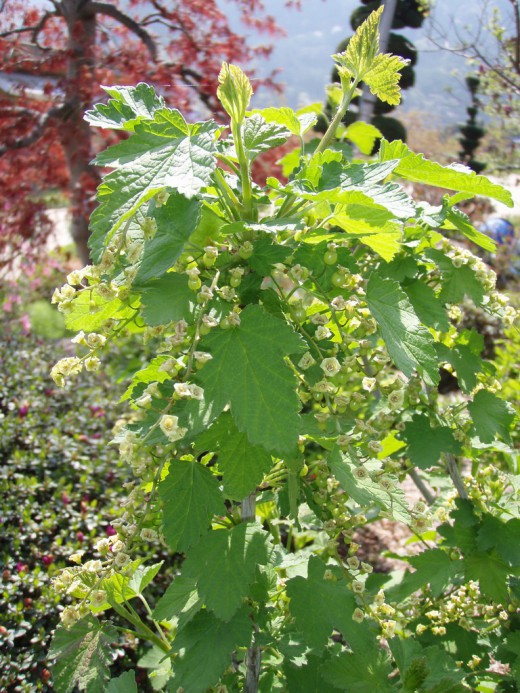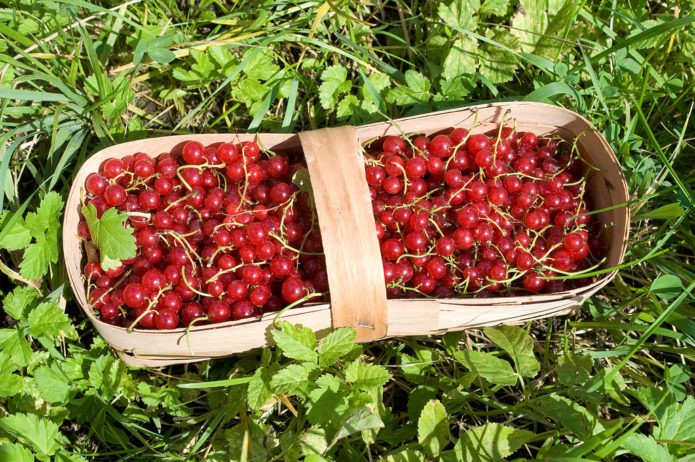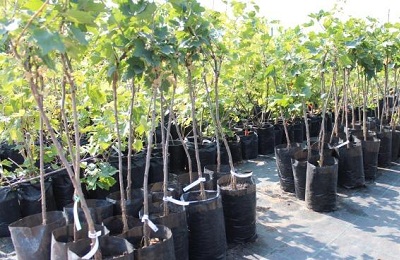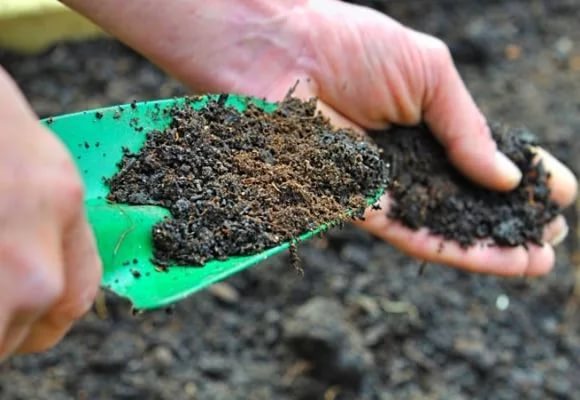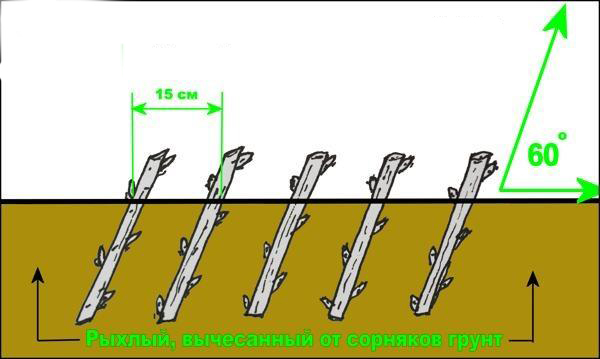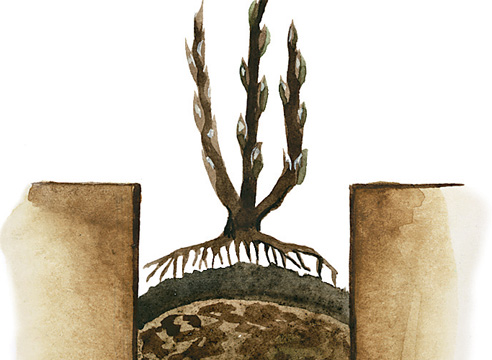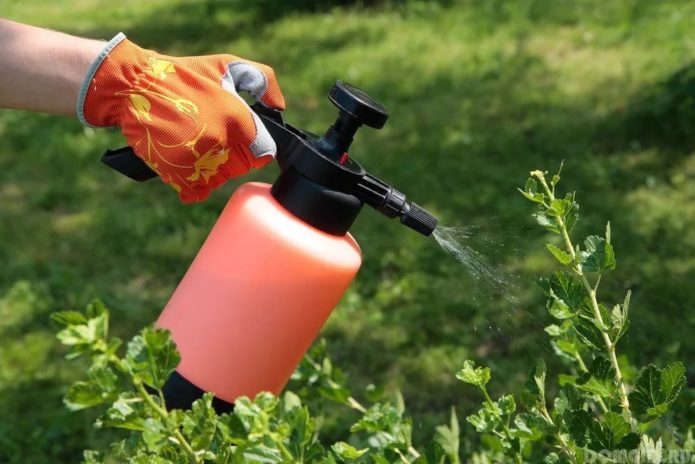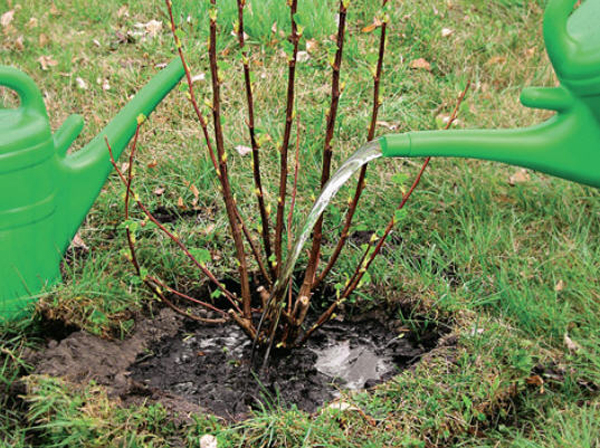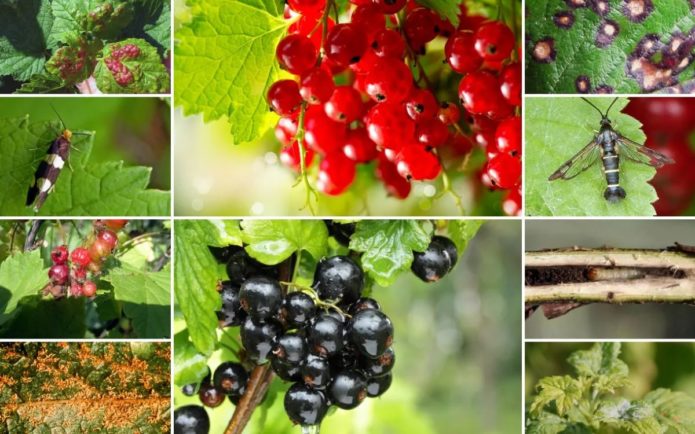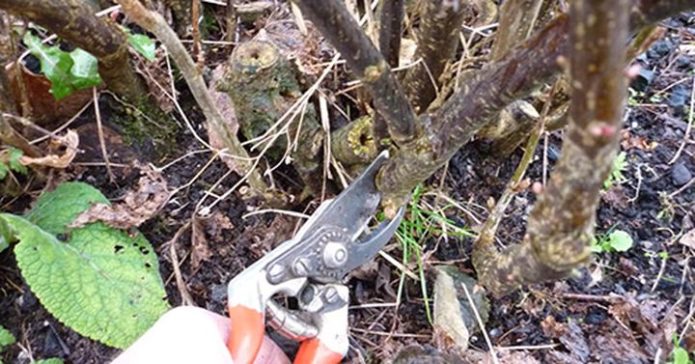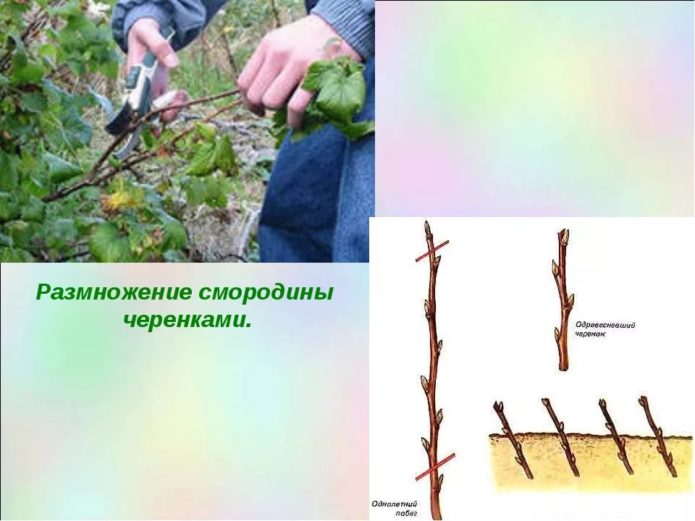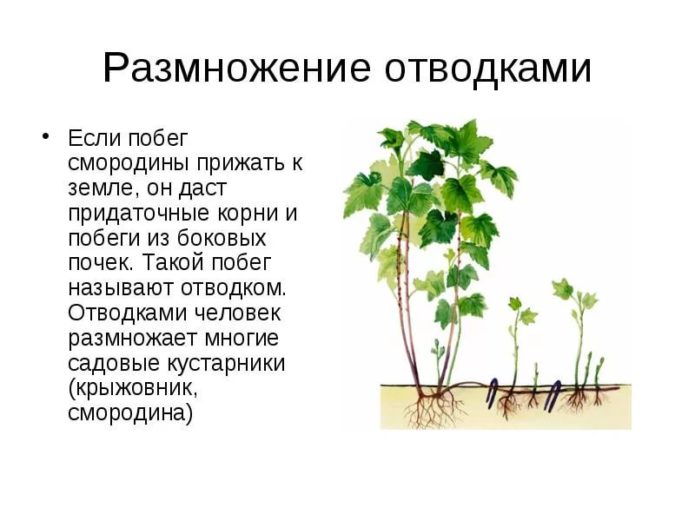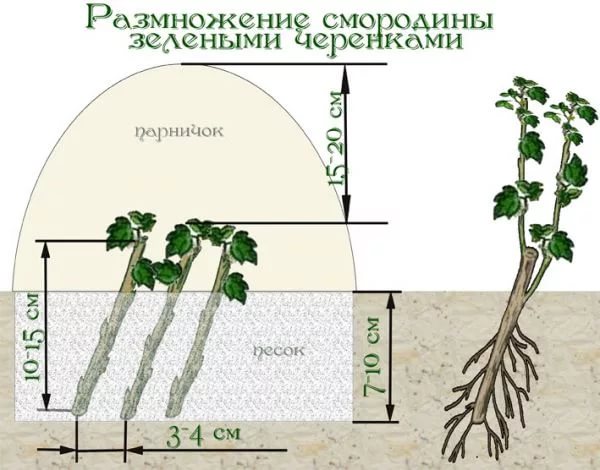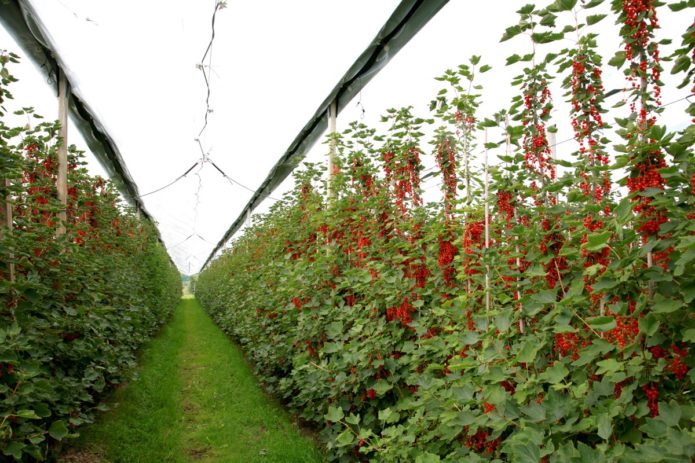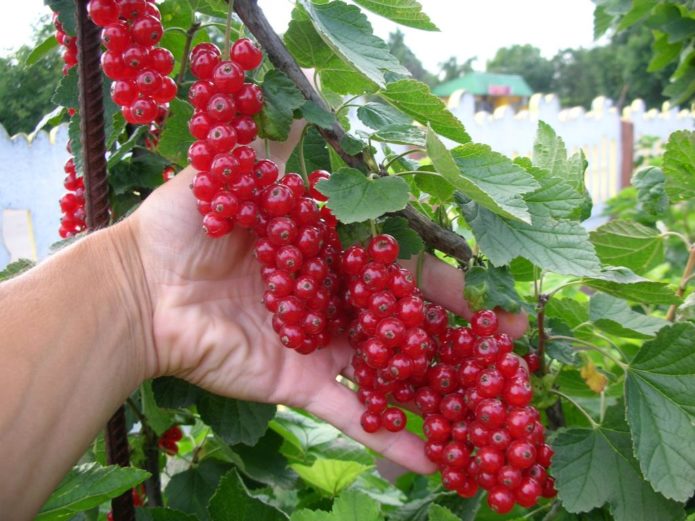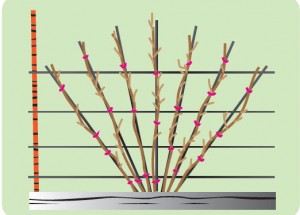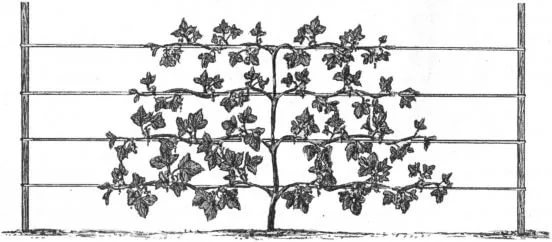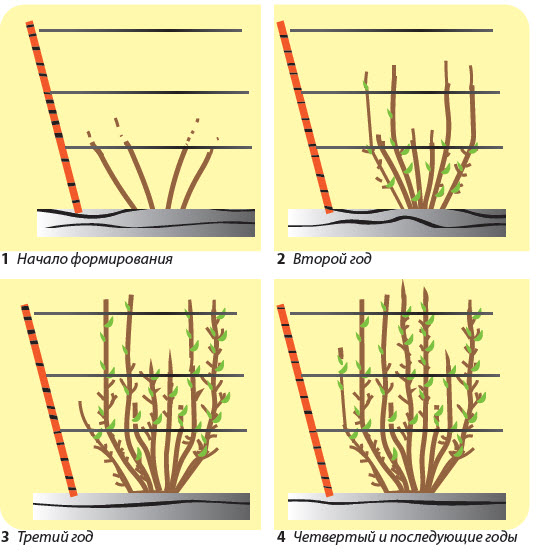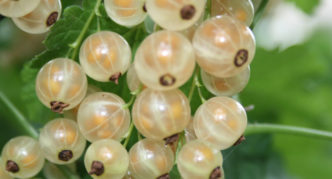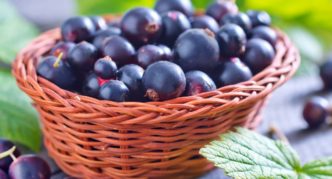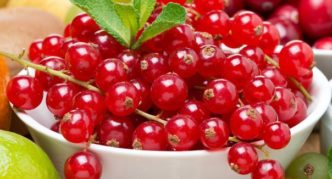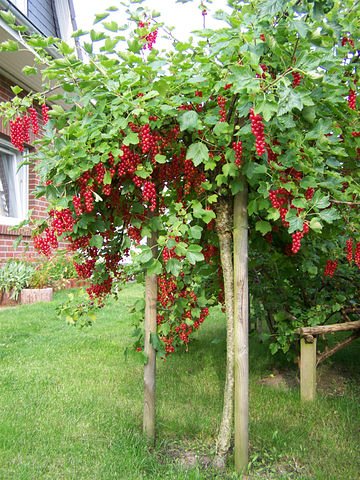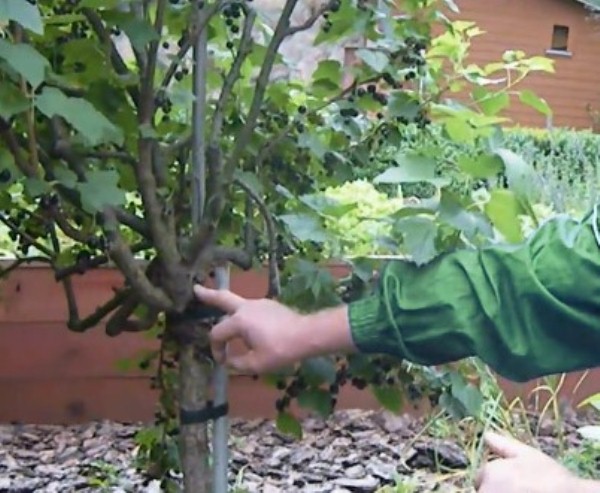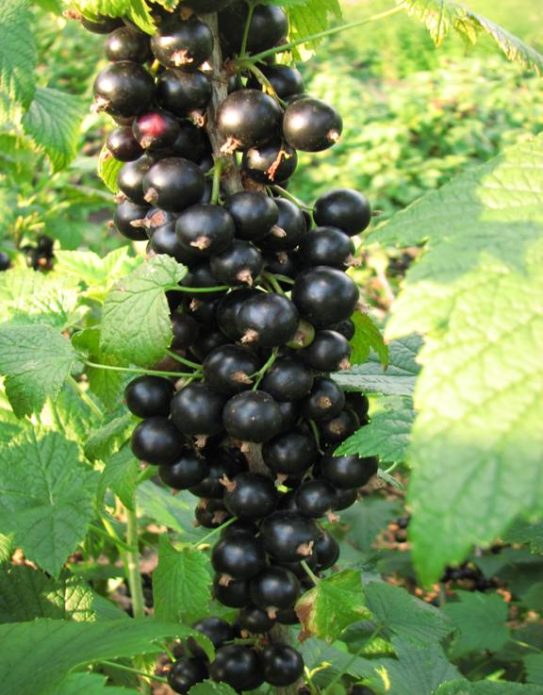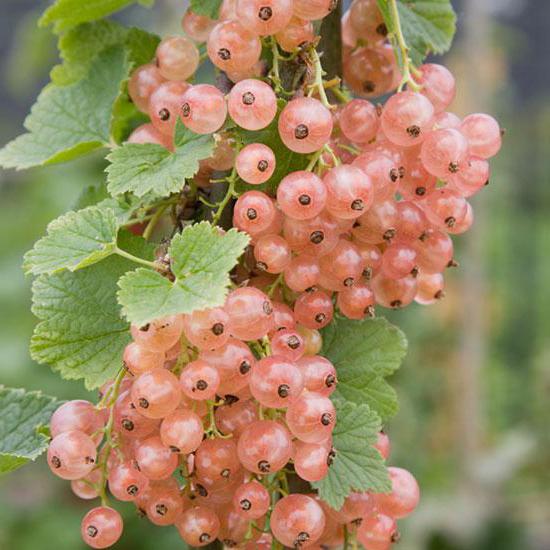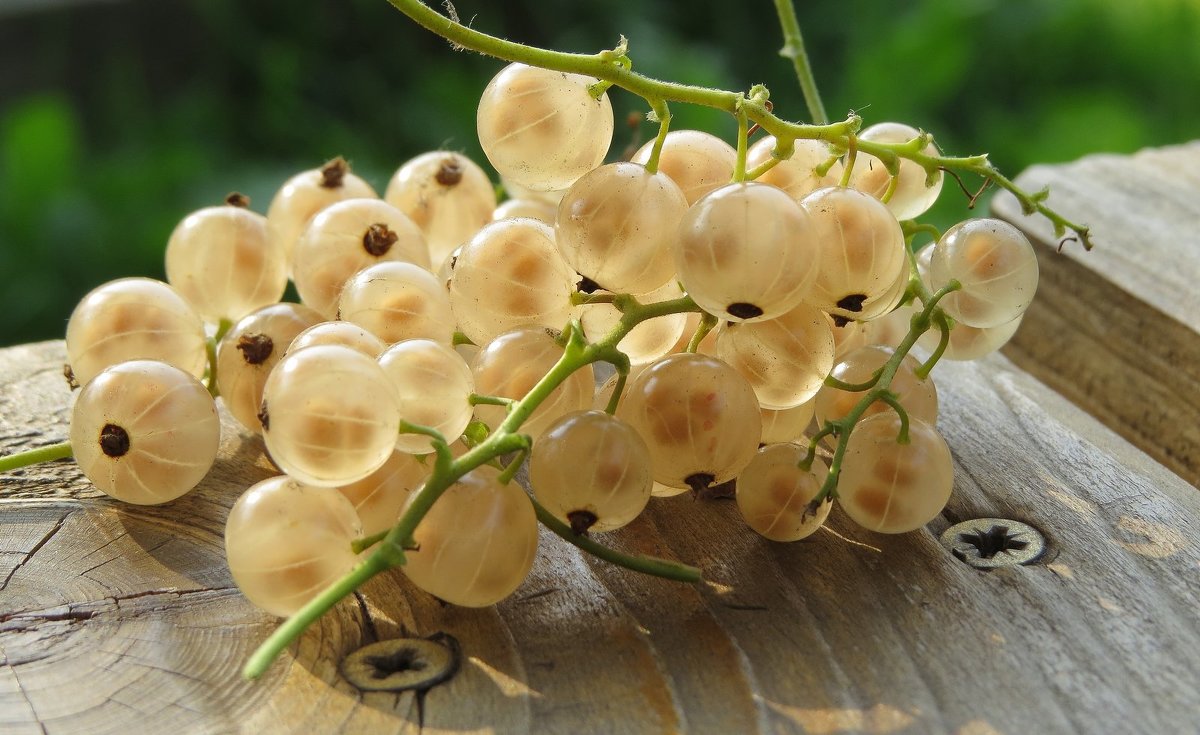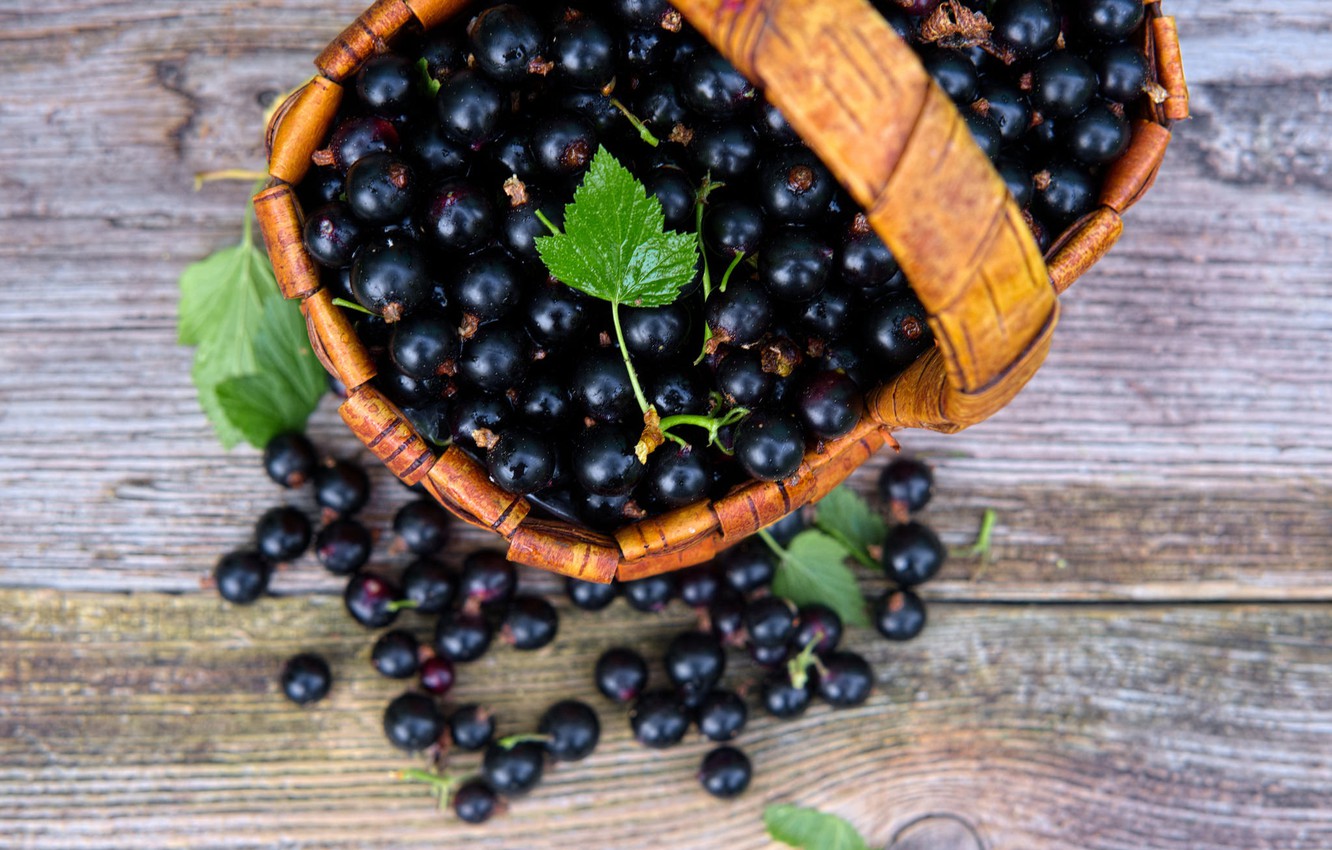Currant is one of the most common and useful berry crops. The need for one person per year is 4 kg. Unfortunately, the market often suffers from a shortage of constant supplies of berries, besides, on the territory of the countries of the former union, the cultivation of currants on private farm lands does not cover the needs of the population. The agrotechnology is quite simple. And what is especially pleasant is that for different varieties, types of currants (black, red, white), the schemes, methods and rules of planting, care are almost the same. Let's make up for the lack of vitamins and learn how to grow blackberries to get the maximum yield!
Content
Growing currants
Currants are one of the sweetest and healthiest berries in our garden. From time immemorial it was collected in the forests. Many gardeners are happy to master the agricultural technology of growing garden currants, especially since many excellent species and varieties have been bred for any region.
General information on how to grow large, healthy and tasty currants comes down to a few important points:
- Correct fit. Depends on the varieties of berries: standard, columnar, as well as on the variety: strongly spreading or compact. Planting using all technologies also implies knowledge of fertilizing, preparing a pit, a garter (if required).
- Top dressing with fertilizers. This is one of the most important rules, which, unfortunately, not everyone follows. It all depends on what kind of crop you want to get. Without top dressing according to all the rules - you will get the minimum varietal yield from the bush. By applying fertilizers, you can increase the yield several times.
- Protection and prevention from diseases and pests. Currants are often vulnerable crops (more than 75 types of pests and viruses). To prevent adversity requires constant attention and work on the part of a person. The main thing is to do everything on time: preventive and curative actions in case of infection with a disease or insect damage. It is quite possible to save your harvest in the early stages.
- Watering and pruning on time. As with many activities, watering and pruning works best when done on time, rather than haphazardly.
Since currant has a large number of useful properties (food, vitamin, essential oil, medicinal, melliferous, phytoncidal), it can be grown for many purposes. For example, the preparation of desserts (jam, marmalade, candies, jam, jelly, various fillings), wines, extracts, liqueurs, liqueurs, fruit drinks, jelly, use as a medicine, a dye, a means to raise mood and immunity (due to the composition). Moreover, not only berries, but also leaves are useful. They are used for infusions, decoctions and tea.
Black currant is a fairly hardy and hardy plant of all berry bushes. For her, you should choose wet areas, but without stagnant water. Red and white currants are more drought-resistant, higher, well-lit and less humid areas are suitable for them:https://flowers.bigbadmole.com/en/yagody/smorodina/kak-posadit-smorodinu.html
Berries contain vitamins A, P, B1, B2, carotene (provitamin A), monosaccharides, organic acids (malic, citric, succinic, salicylic) - 1.5-3.6%, sugars - 6-11%, pectin, nitrogenous , tannins and dyes, essential oils, glycosides, anthocyanin compounds, trace elements.
Planting and transplanting currants
The most important and pleasant thing about currants is that it is a self-fertile crop that does not require planting additional pollinators.
How to plant currants - video
Private sector gardens are a great place to plant sweet berry bushes. Since the currant grows well, it is best to plant it near fences or fences with an indent of 1 or 1.5 meters. Don't save space in the distance between bushes. The most adequate figure ranges from one meter to two and a half (for large-spreading varieties, taking into account their growth). Every plant needs a sufficient amount of sun. In the shade or partial shade, currants become highly vulnerable to diseases and pests. In addition, due to the exposure of skeletal branches, the shrub begins to bear fruit only on the upper parts, and the berries lose a lot in mass.
Important! Currants can propagate by cuttings, but for maximum results in the medium term, it is better to get ready-made standard seedlings with shoots and roots.
The best time to plant any currant is autumn. Choose your shrub site carefully. The place is not suitable in shaded areas, with acidic soil, waterlogged or waterlogged. If there is not enough space, but there is still a lot of moisture, then you can get out of the situation
It is good to add rotted horse or cow manure to the planting hole. In the case of acidic soil - add lime - fluff (1 kg per 1 sq. M.), Clean wood ash for leaching. The emphasis on deacidification of the earth is made due to the fact that currants are one of the few berry bushes that in no way tolerate increased acidity.
Reproduction of currants by cuttings - technology, rooting and storage of harvested cuttings:https://flowers.bigbadmole.com/en/yagody/smorodina/razmnozhenie-smorodinyi-cherenkami-vesnoy.html
It is more practical and better for the development of bushes to introduce the Transcarpathian natural zeolite into the soil at the rate of 1.2–1.5 kg / m2. Unlike lime, zeolite will last up to 10 years.
It is convenient to dig a hole 0.5 to 0.5 m wide and up to half a meter deep. In the form of a mound (conventionally about 20 cm), pour earth mixed with the above fertilizers on the bottom. Then everything is simple: a seedling with strong root shoots should be laid at an angle of 45-60 degrees. This way additional roots are better formed.
You need to bury it carefully so as not to fall asleep the lower kidneys. Many people advise cutting off the top of the currant seedling to stimulate the formation and growth of new buds.
If a plant currants more correctly in the fall, then you need to transplant in early spring.This is due to the fact that a formed small bush for transplantation may simply not take root before winter, freeze due to a fragile, stress-bearing root system.
In this case, the landing pit is prepared as soon as the ground warmed up from the permafrost allows. Holes are dug a week or two before transplanting. Otherwise, the technique is the same as when planting small seedlings in a permanent place. The main thing is for older shrubs to optimally increase the size of the hole so as not to damage the shoots and roots.
First year
The first year will give you some powerful zero shoots. The next fall, after planting, it is advisable to leave only three or four of them. For the rest, you need to trim the tops.
After planting, it is necessary to pour about 10 liters of water on the bush, mulch with humus or peat.
In the first year, currants are very weak, prone to many misfortunes. Before winter, be sure to cover the seedling so that it does not freeze out. A strong plant can survive frosts down to -45 degrees. More dangerous are spring frosts, which can damage the kidneys. Therefore, it is not recommended to leave the seedling without shelter. Agrofibre is perfect for this.
You should know that the root system of the currant is almost horizontal. The maximum for which the roots grow in depth: 25-30 cm.
To prevent the roots from being damaged by pests or commoncurrant diseases, as well as to protect them from freezing and drying out in different seasons - it is necessary to mulch the bush hole. For this, old sawdust, peat, coniferous needles are suitable.
In the first year of life, the currant bush can wither away from lack of moisture. Therefore, ensure good watering with fertilizers. The main thing is not to overdo it and not flood the plant. For 1 sq.m. 20 liters will be enough.
Fertilizing and feeding currants
When planting shrubs, lime is introduced into the ground (at a pH of 4-5.5, the norm is 0.3-0.8 kg / m2). Generally enough for 1 m2: organics - 3-4 kg, granular superphosphate - 150-200 g, potassium sulfate - 25-35 g.
Currant bushes are very responsive to fertilization with nitrogen, phosphorus and potassium. What is rich in humus, manure. However, you should remember about the intolerance of currants to chlorine. Therefore, when choosing a complex fertilizer, carefully read the composition.
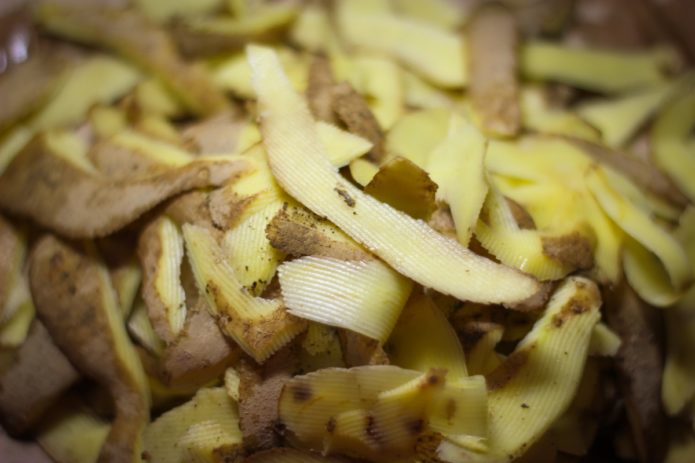
Top dressing with dry potato peel: for 1 liter of peel 10 liters of water, insist and spray currant flowers
A good result is obtained by spraying currant flowers with fresh cow's milk. It must be diluted with water in a ratio of 1:10. Oddly enough, such a surface top dressing makes it possible to get a larger crop, extend its period and significantly improve the taste of the fruits themselves.
Watering
Despite the fact that currants do not like excess moisture, stagnant water - it is not worth overdrying the shrub. This will negatively affect not only the harvest of this year, but also the next. The buds will be very weak, the berries are crushed, they will crumble early. Even not the third year after drying out and damage to the plant, there may be a loss in yield.
Currants need to be watered abundantly during the filling of the berries, as well as in the autumn. The latter is called water-charging irrigation. The roots grow in late autumn, so in September - October it is necessary to water the currants two to three times more. than usual. In numbers, this is 60–70 liters per bush.
Protection from pests and diseases
To prevent diseases, to protect against insect pests, currants are sprayed with insecticides and fungicides. However, this is not recommended if you want a healthy and organic berry.
How to deal with diseases and pests of currants and how to carry out prevention:https://flowers.bigbadmole.com/en/yagody/smorodina/bolezni-smorodinyi-opisanie-s-fotografiyami-i-sposobyi-lecheniya.html
In this case, it is better to play it safe and follow the following rules:
- Buy only proven seedlings from authorized dealers or experienced gardeners;
- Propagate currants with live bait (cuttings) from a healthy shrub;
- After planting, be sure to cut the seedling into 2-3 buds;
- If the plant is infected, it is better to do it radically - remove it. If only the tops are damaged, cut them off and burn;
- When blooming buds, spray them with a garlic solution (100 grams of crushed or grated garlic, infused in a liter of warm water, diluted in 10 liters);
- The swampiness of the site leads to rust, therefore it is necessary to drain the area near the gardens from the swamps;
- Change the mulch every year, as well as remove fallen leaves (burn) around the holes;
- It is very effective in early spring to process bushes with hot water (about 70 degrees);
- Ash solution every week as a preventive measure.
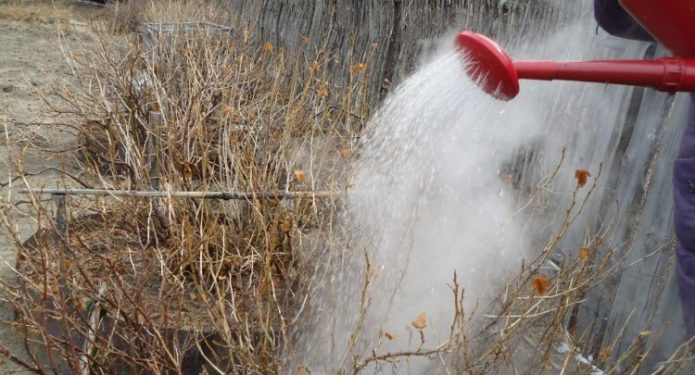
Watering currant bushes with boiling water is necessary in order to effectively get rid of larvae and insect pests, as well as spores, fungi and other misfortunes
The most common pests: currant kidney moth, gray kidney-eater, currant kidney mite, currant flower gall midge, currant leaf gall midge, common spider mite, gooseberry aphid, leaf gall aphid, great currant aphid, gooseberry moth, yellow gooseberry or gooseberry sawfly, leafworm, currant stem gall midge, narrow-bodied currant goldfish, golovach kravchik, currant glass bowl, gooseberry moth, blackcurrant berry sawfly.
Diseases: American mealy, anthracnose, septoria (or white spot), columnar rust, goblet rust, terry.
Currant pruning
It is best to prune currants in early spring or late autumn, when the leaves have not yet appeared or have already fallen off. The bush should generally be formed from 16–20 branches with different ages. Each year, 3-5 zero shoots should be left on the bush. If the branch has been bearing fruit for 6 or 7 years, it is pruned. Such branches are considered old and weak, they will no longer give a good harvest.
You need to carefully examine the bush, remove tangled, curves that interfere with other branches. And also very low, branched and too long tall. Do not damage the short branches on which flower clusters will bloom in spring. and then a rich harvest will be formed.
Large sections (more than 8 mm) should be covered with garden pitch.
Prolongation of fruiting with anti-aging pruning
After 10-12 years, the currants should be renewed with anti-aging pruning.
It will take time, since this pruning is done in two to three procedures. First, completely cut off half of the old branches. After a year, remove the remaining half. Within a year after pruning, new root shoots form and grow instead of old branches. Of these, about 5-7 branches are left, the smoothest and healthiest. Subsequently, the bush should have about 20 evenly distributed branches.
You can cut the bush completely from old branches. Then in the first year he will give a large number of small thin shoots. They leave on 2-3 healthy shoots. The rest is removed so that the bush does not overgrow. In the second year of such pruning, currants begin to yield a crop.
Such rejuvenation will extend the fruiting period of the bush by another 5-8 years.
How to properly cut currants - video
Reproduction of currants
There are several ways to propagate currants: green or lignified cuttings, branches, seeds. The latter method is extremely uncommon. Firstly, for a long time, and secondly, the currant does not inherit all the characteristics of the mother bush.
The easiest and most convenient way is to propagate by green cuttings or live bait. These are annual shoots, planting which you can almost 100% get a good currant bush in a year or two. Basically, they are planted in the spring, first in the place where live bait grows and give buds, shoots. And in the fall of the same year, they are transplanted to a permanent place. After planting, it is important to water and mulch well.
Cutting reproduction method - video
Each gardener has his own secrets of currant propagation. It is worth learning about them and choosing your own, or trying different ones from experience.
How easy and simple to propagate currants - video
Currant growing methods
There are now many excellent innovative technologies of the so-called intensive cultivation. Basically, they are designed to get the maximum yield after three to four years after planting the seedling. But almost half of the success depends on the cultivation method. For
each gardener is close to the method that is more suitable for the climate, variety, personal preferences, and, undoubtedly, the area in which the crop grows.
Cord method
The cord or rope method is a structure with supports or beams attached to them with ropes. With the help of them, the bushes are tied and thus give rigidity, uniform growth, and correct location. This greatly facilitates harvesting and caring for currants. This method is often confused with trellis, but there is one difference. The cord method is not necessarily a vertical structure. Ropes can be placed horizontally (for low-growing or creeping varieties) or at an oblique angle.
This method is well applicable in areas where there are strong winds and vertical structures are impractical. Another cord is used for currant bushes to save space, since you can form the plant in any direction, adjusting the rigidity of the rope fastening, its direction and angle.
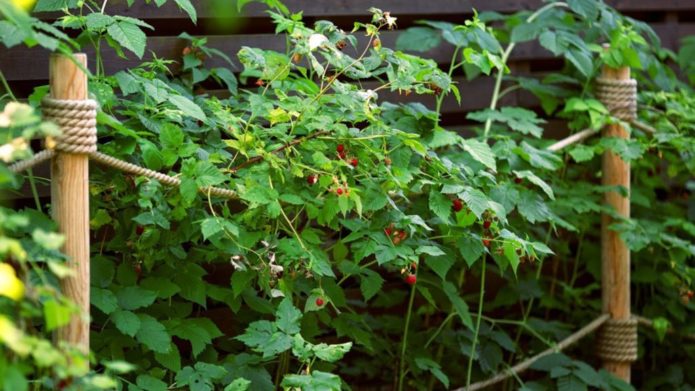
With the help of a cord (rope), you can not only prop up the bushes, but also form their direction of growth
Of course, this method is not very effective if you are going to plant a currant bush plantation. More suitable for small areas in windy northern areas. And also for varieties, whose characteristics are short and flexible. It is labor-intensive and time-consuming, since the rope rope must be constantly adjusted, moving it on the bushes and beams as the currant grows.
Dutch method
This method is very simple but effective. Actually, the cultivation method itself came from the excellent Rovada variety, which is now known to any self-respecting gardener. Rovada is a red currant variety bred in Holland using a special technology.
The technique consists in the correct formation of the seedling itself. Two or three of the strongest stems are left, and all lateral shoots and shoots are shortened by 4-6 buds. The Dutch mix the method of growing currants in the trellis method and the thickening of the plantings. They are not afraid of the lack of sunlight, since with the help of a trellis and strong pruning, this minus does not bring compensation.
Currant berries in this way receive a lot of nutrients (due to the fact that there are few branches on the bush and nutrition goes to those berries that are), the fruits ripen excellent, large.Thus, Dutch breeders collect about 30-40 tons per hectare of land.
In this way, you can grow any currant. In this case, it is necessary to assess the area allocated for planting currants. Do not forget that Dutch breeders grow their currants on an industrial scale. Although this technique is undoubtedly valuable for those who have
Tapestry method
One of the trellis cultivation methods is called fan-shaped, since the currant bush, located on the trellis net, looks like a fan with straightened branches.
It is worth mentioning right away that this method is not for the lazy. But it's worth it, since the berries in the collection are twice as large, and they themselves are usually large and sweet. All this is due to the fact that the branches on the trellis net do not interfere with each other, do not intertwine. Trimming is easy, everything is visible at a glance. Each currant flower gets both light and nutrition. With this method, even the shrub itself retains its intensive fruiting age longer.
Basically, the trellis is placed in the form of a wall. When currant bushes are carefully planted along this wall, over time, a kind of hedge is obtained. It is not only effective but also beautiful. It is better to place such a wall along the fences or instead of them. If you put two rows of trellises, then it is worth keeping a distance of one and a half to two meters between them. Better yet, make wide paths.
As the material itself, metal pipes, buried at an angle, are used. We pull twine or stainless wire tightly on them in rows, do not clamp the branches. Plants planted in a trellis trench will produce shoots that need to be tied to the trellis net with additional ropes. Small supports can be placed for new branches.
Currant cuttings should be placed at a distance of 0.8-1 meter from each other.
Features of growing red and black currants

Red (golden, white) and black currants differ significantly in their properties and very little in agricultural technology
There are no big differences in the cultivation of different types of currants. The most common currant is black. It is most often found in private gardens. In contrast, red is more demanding on sunlight and more sensitive to thickened plantings. However, red currant bushes do not require anti-aging pruning as black currant does. This is due to the biological peculiarity of the structure, development and formation of fruit buds.
It is important to know! White and golden currants are a variety of red currants. These are her less intensely colored "sisters".
There are more differences between these types of currants in their properties and taste. Black currant is more fragrant, odorous, has a large percentage of ascorbic acid in its composition. Red, white and golden currants are more acidic, but just as juicy and healthy.
It should be noted that the bushes of red, golden and white currants are more compact than black ones.
Differences currant
- White and golden currants - a variety of red
- Black currant has sprawling bushes, needs frequent pruning
- Red currant has a more sour taste and a compact bush
Features of growing varieties of currants
There are different types of currant bushes, their fruiting and taste depends on this. Let's consider the most interesting ones.
Standard currant
It is a small tree with one conductor (stem) and several lateral growths, branches.This type of shrub appeared due to the damping off of a large number of berries in the lower tiers of the currant bush. especially in hot and humid weather, saving the harvest was difficult. Such a tree has a number of undeniable advantages:
- The percentage of spoiled berries is noticeably reduced due to the high location from the ground;
- The crown is well ventilated and warmed up, the berries become tastier, sweeter;
- Pests "attack" currants less;
- Saving space for planting;
- The harvesting process has been simplified;
- Facilitated care of currants;
- Decorativeness.
Of course, there are also disadvantages to this type of tree shrub. For example, a strong wind can break the trunk. Also, standard currants are considered less winter-hardy.
Support for such a plant is always necessary, since without it there is a high risk of stem breakage.
There are two types of the formation of standard currants: with a self-rooted stem and on a stock.
Self-rooted stem method
- Until the juice begins to move, in early spring, on a bush of any kind of currant, you need to choose one upright shoot with a height of at least a meter. Pinch the top on it, cut off others at the root;
- Leaving 3-4 buds on top, the rest along the entire length are removed and cauterized (blinded);
- From the buds left, shoots should stretch out, which are pinned over the third leaf;
- The next year, pinching on growing shoots must be repeated;
- In the third year, pruning is carried out only for sanitary purposes.
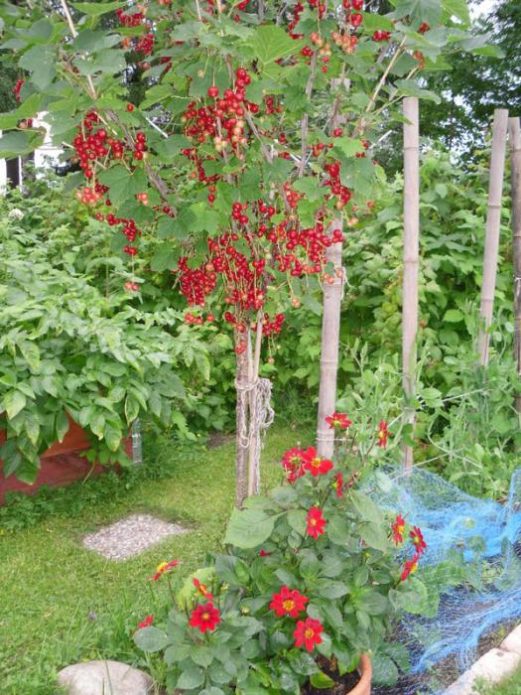
The self-root method can be applied to any seedling from the nursery or to your own bush in the garden
Rootstock method
- First you need to prepare a vertical grafting stalk in one shoot. In order for the trunk to be as thick as possible on the future plant, all lateral branches and emerging shoots are carefully removed. The stock must be at least 0.8 m long and 5 mm thick.
- A plant with 3-4 buds is suitable for the scion. Choose strong, winter hardy and disease resistant varieties.
- All buds are blinded on the main stem of the scion.
- The lateral stems on the scion are pinched over the third leaf upon reaching the shoot length of 10–12 cm. In the second year, the procedure is repeated with new lateral shoots.
- As in the first method, only sanitary pruning is necessary from the third year.
In order for the standard currant not to break off, the branches must be tied up. To do this, construct a structure similar to an umbrella or a carousel.
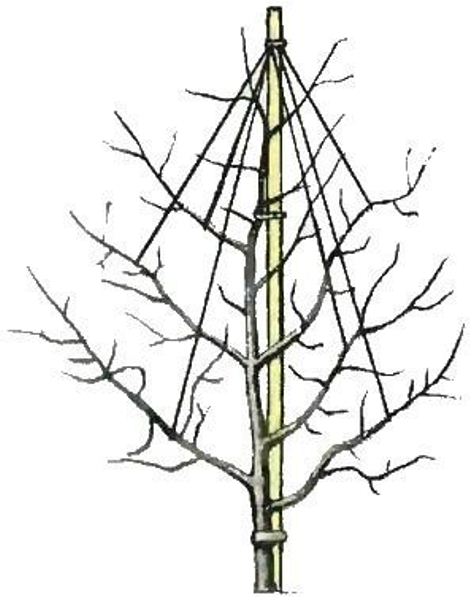
A garter of standard currants is needed so that the branches do not break off under the weight of berries and their own weight
Columnar currant
This type of currant is replacing old varieties, the berries of which become smaller over time. Columnar currants have an advantage in this. It is stronger, stronger, more durable. It has straight, powerful shoots, the bush itself is spreading. Branches need to be shaped, cut and tied often. Columnar currants bear fruit later than other species: by about a month or one and a half, depending on the climate and variety.
Columnar currants require a lot of space. Even with constant pruning and shaping, it needs space due to its massive and strong branches.
One of the clear advantages of the columnar currant is its large fruit size. Berries weigh up to 6 grams. A common red currant weighs 2 to 3 grams. An indisputable advantage is that the fruits do not crumble for a long time and are collected in large brushes, this facilitates the collection of currants.
The main care for such a shrub is timely pruning of branches. Once they reach 25 cm, they need to be removed by cutting them over the fourth sheet. And, of course, when planting seedlings of this type, it is necessary to observe the distance between them - at least one and a half meters.
Features of growing currants in the regions
On the territory of Russia, currants ranked first in terms of prevalence. In the state register of breeding works, it is listed as one of the most demanded crops in farming and on the market, surpassing other horticultural crops.
All types of currants, except for blood red, take root well and grow in the central part of Russia, the Urals, Siberia and the Far East. Red currant, although widespread, is still more vulnerable to frosty winters.
In the Moscow region and in the western territory of the former USSR, currants grow without problems. In addition, in this area with milder winters than in Siberia and the Far East, there are more varieties of taking root currants. In Ukraine and Belarus, varieties of thermophilic bright red currants are widespread.
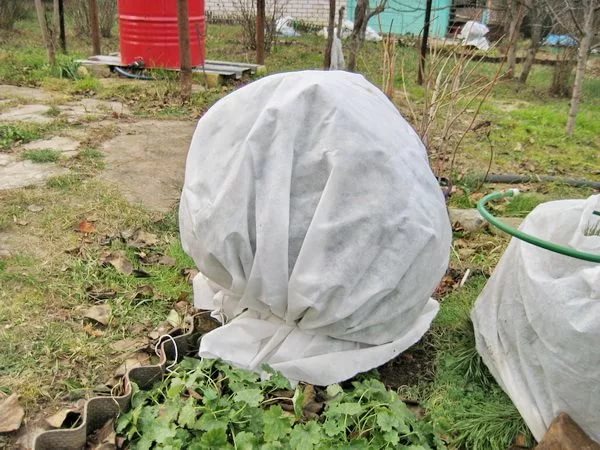
A feature in frosty regions (up to minus 40 and below) is that it is advisable to cover all seedlings up to three years with agrofibre, preventing freezing
One of the best was the Yadrenaya variety. In terms of indicators, the Valovaya variety catches up with it. These cultures are record holders and grow with success in all regions.
Growing and caring for currants - video
In conclusion, I would like to draw your attention to the fact that there is a shortage of such a valuable crop as currants in the markets. Growing on an industrial scale or for your family doesn't make much of a difference in farming as long as you approach the process with care and attention. Compliance with all the rules and careful attention to planting will always allow you to get a rich harvest in any region, be it black, red or white currants.

